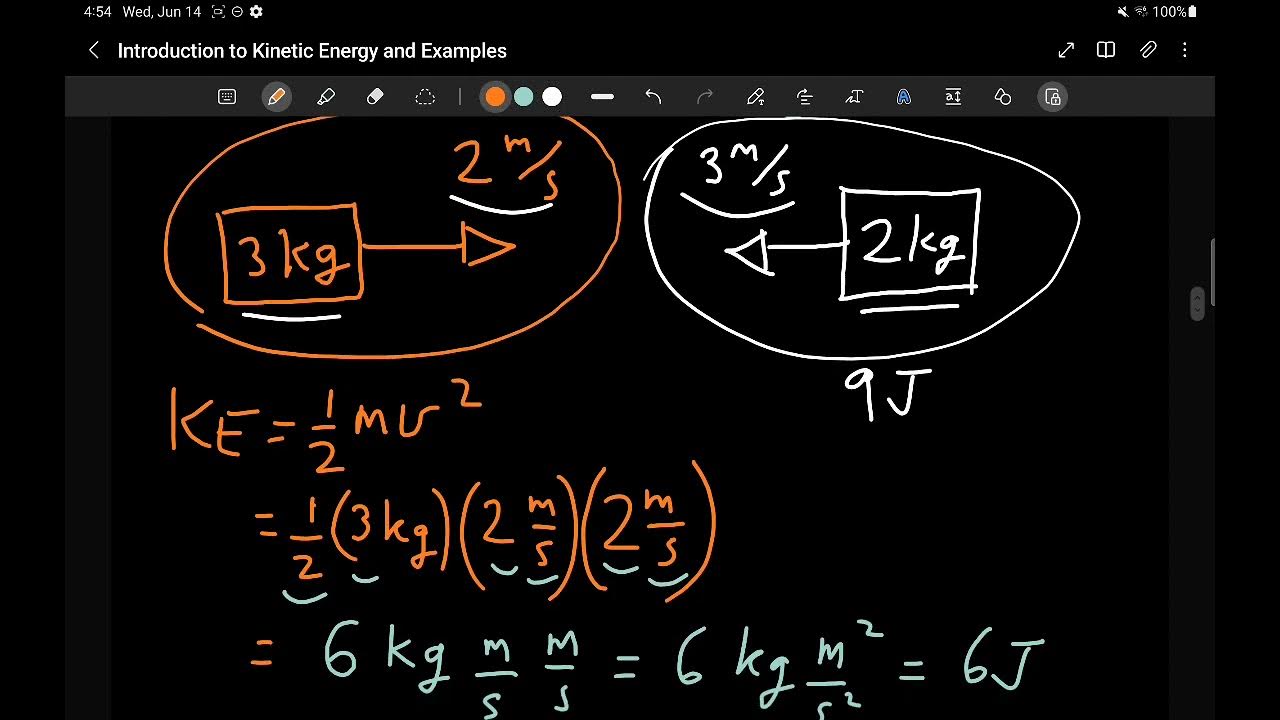Momentum | Forces & Motion | Physics | FuseSchool
Summary
TLDRThis educational video explains the concept of momentum, defining it as the product of mass and velocity, and emphasizes its significance in understanding the motion of objects. It clarifies the relationship between force and momentum, illustrating how balanced forces keep a car at a constant speed. The video also covers the law of conservation of momentum, demonstrating it through examples of collisions, both in real cars and toy models. By the end, viewers gain a clear understanding of how momentum operates in closed systems and the fundamental principles governing elastic collisions.
Takeaways
- 🚗 A car moving at a constant speed has balanced forces acting on it, meaning the forward force from the engine equals the backward frictional force.
- ⚖️ Momentum is defined as the product of an object's mass and its velocity, and is a measure of how difficult it is to stop a moving object.
- 🎯 The direction of momentum is always in the direction of the object's movement; a stationary object has zero momentum.
- 📏 Momentum is calculated using the formula: momentum (p) = mass (m) × velocity (v).
- 🔍 The units of momentum are kilograms times meters per second (kg·m/s).
- ⚠️ When a car slows down, the net force acting on it is in the opposite direction of its velocity.
- 📊 The law of conservation of momentum states that in a closed system, the total momentum before an event equals the total momentum after the event.
- 🚦 In collisions, if two cars of equal mass collide and stick together, their combined momentum must be conserved.
- 🧸 When toy cars collide and stick together, their post-collision momentum can be calculated by considering their velocities and masses.
- 🎱 The experiment with balls demonstrates conservation of momentum; pulling out balls results in an equal number of balls moving away, illustrating the principle effectively.
Q & A
What is momentum and how is it calculated?
-Momentum is defined as the product of an object's mass and its velocity, expressed as p = m × v. The units of momentum are kilograms times meters per second (kg·m/s).
Why does a car moving at a constant speed have balanced forces acting on it?
-A car moving at a constant speed has balanced forces because the forward force from the engine equals the backward frictional forces. This results in no net force acting on the car.
What happens to the momentum of a car if it is slowing down?
-Even if a car is slowing down, it still possesses forward momentum as long as it is in motion. The momentum decreases, but the direction remains the same until the car stops.
How can we visualize the difficulty in stopping a moving object?
-Momentum illustrates the difficulty in stopping a moving object: a heavy object moving fast, like a cannonball, is much harder to stop than a lightweight object moving slowly.
What does the law of conservation of momentum state?
-The law of conservation of momentum states that in a closed system, the total momentum before an event (such as a collision) equals the total momentum after the event.
How do we calculate the momentum of two colliding cars of equal mass?
-To calculate the momentum of two colliding cars of equal mass, first determine the momentum of each car before the collision and then apply the conservation of momentum to find the combined momentum after the collision.
What is the significance of using negative velocity in momentum calculations?
-Negative velocity is significant in momentum calculations when objects are moving in opposite directions. It ensures the direction of momentum is accurately represented.
Can you provide an example of calculating momentum for a stationary object?
-For a stationary object, like a car with a mass of 2500 kg, the momentum is calculated as p = m × v. Since the velocity (v) is 0, the momentum is 0 kg·m/s.
Why do toy balls move away in a collision, and how does it relate to momentum conservation?
-In the toy ball collision demonstration, the balls move away after collision because momentum is conserved. If one ball collides and transfers its momentum, the same number of balls will move away in the opposite direction.
How do mass and velocity affect the stopping distance of a vehicle?
-The stopping distance of a vehicle increases with greater mass and velocity. Higher momentum means it requires more force and distance to bring the vehicle to a stop.
Outlines

This section is available to paid users only. Please upgrade to access this part.
Upgrade NowMindmap

This section is available to paid users only. Please upgrade to access this part.
Upgrade NowKeywords

This section is available to paid users only. Please upgrade to access this part.
Upgrade NowHighlights

This section is available to paid users only. Please upgrade to access this part.
Upgrade NowTranscripts

This section is available to paid users only. Please upgrade to access this part.
Upgrade Now5.0 / 5 (0 votes)





